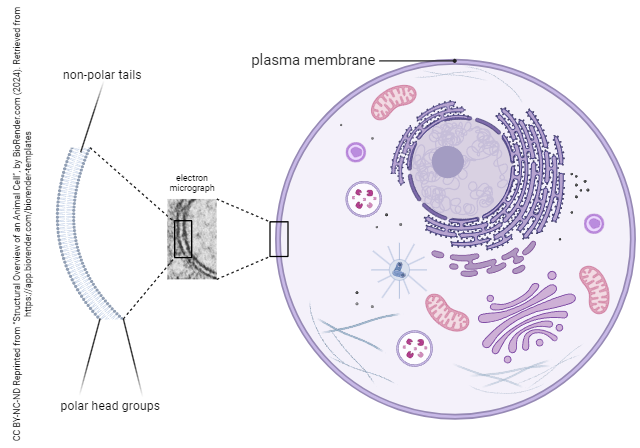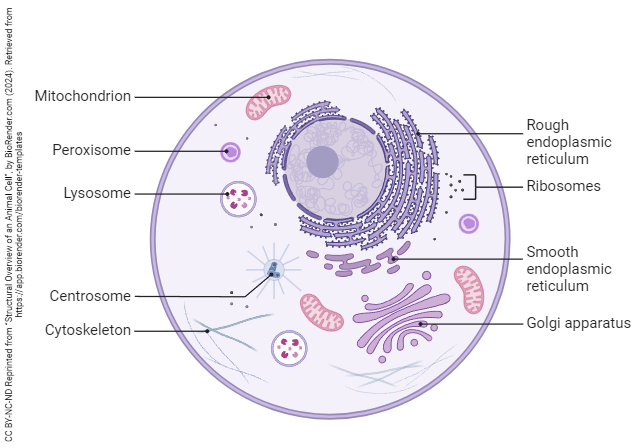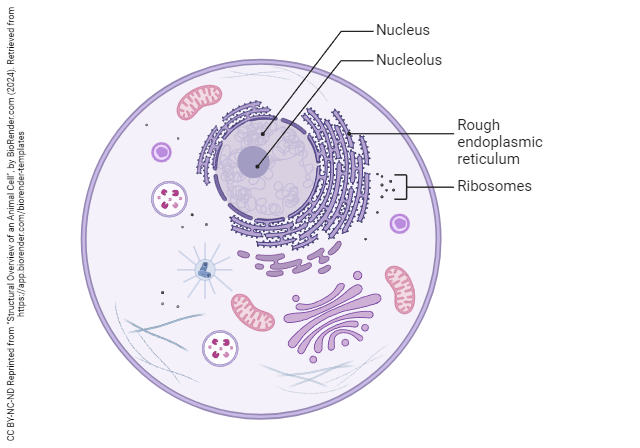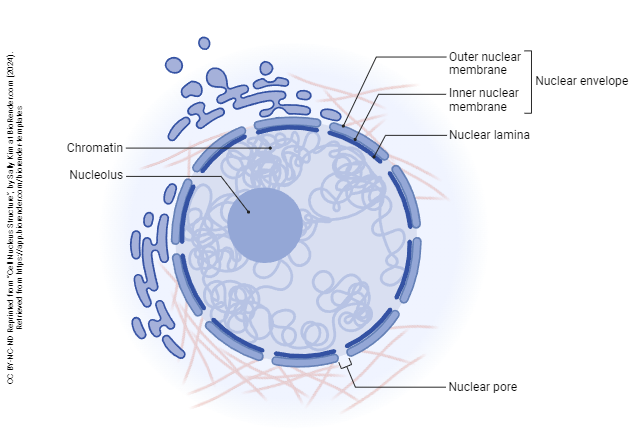Parts of the Eukaryotic Cell
Objective 4.2
4.2.1 Identify the three main parts of a eukaryotic cell and describe the function of each.
Eukaryotic cells have three main parts, which we’ll consider in turn:
- The plasma membrane, a covering that regulates what comes into or leaves the cell.
- The cytoplasm, a mixture of water, salts, proteins, and organelles.
- The nucleus, the control center of the cell. DNA and RNA are made in the nucleus.

The plasma membrane covers and protects the cell, controls what gets in and what leaves, forms links to other cells, and “flies a flag” to identify the tissue or organ that the cell comes from, as well as the individual that the cell belongs to. For example, all the cells of your body have genetically-determined markers that make them incompatible with any other person’s cells (except an identical twin), which is a challenge when transplanting organs from one person to another.
The shape of a cell is determined by the cytoplasm. The cytoplasm is comprised of cytosol and organelles. Cytosol is a mixture of water, salts, and proteins. Organelles are tiny organs, as the name implies, that carry out essential cell functions. Some, like the mitochondrion, are almost self-contained cells in their own right. (In fact, scientists believe that mitochondria are primitive prokaryotic cells that were “enslaved” by our eukaryotic ancestors and forced to create energy for the cell.1). Mitochondria have their own DNA, which means that they can be used to determine maternal lineage.

The nucleus is the control center of the cell, where genetic information is stored. Remember that deoxyribonucleic acid (DNA) is the genetic material that must be reproduced and read without error, and is generally never altered or destroyed. It may be thought of as the blueprints or plans for the cells of the body; all nucleated somatic cells contain identical copies of the same DNA. (Somatic cells are those that are neither sperm nor eggs, both of which are part of the reproductive system.) RNA is made in the nucleus and exported into the cytoplasm, where it carries out its work: making proteins.


Media Attributions
- U04-007 Structural Overview of an Animal Cell preview Unit 4 © BioRender is licensed under a CC BY-NC-ND (Attribution NonCommercial NoDerivatives) license
- U04-008 Structural Overview of an Animal Cell preview Unit 5 © BioRender is licensed under a CC BY-NC-ND (Attribution NonCommercial NoDerivatives) license
- U04-009 Structural Overview of an Animal Cell preview Unit 6 © BioRender is licensed under a CC BY-NC-ND (Attribution NonCommercial NoDerivatives) license
- U04-014 Cell Nucleus Structure © Sally Kim is licensed under a CC BY-NC-ND (Attribution NonCommercial NoDerivatives) license

